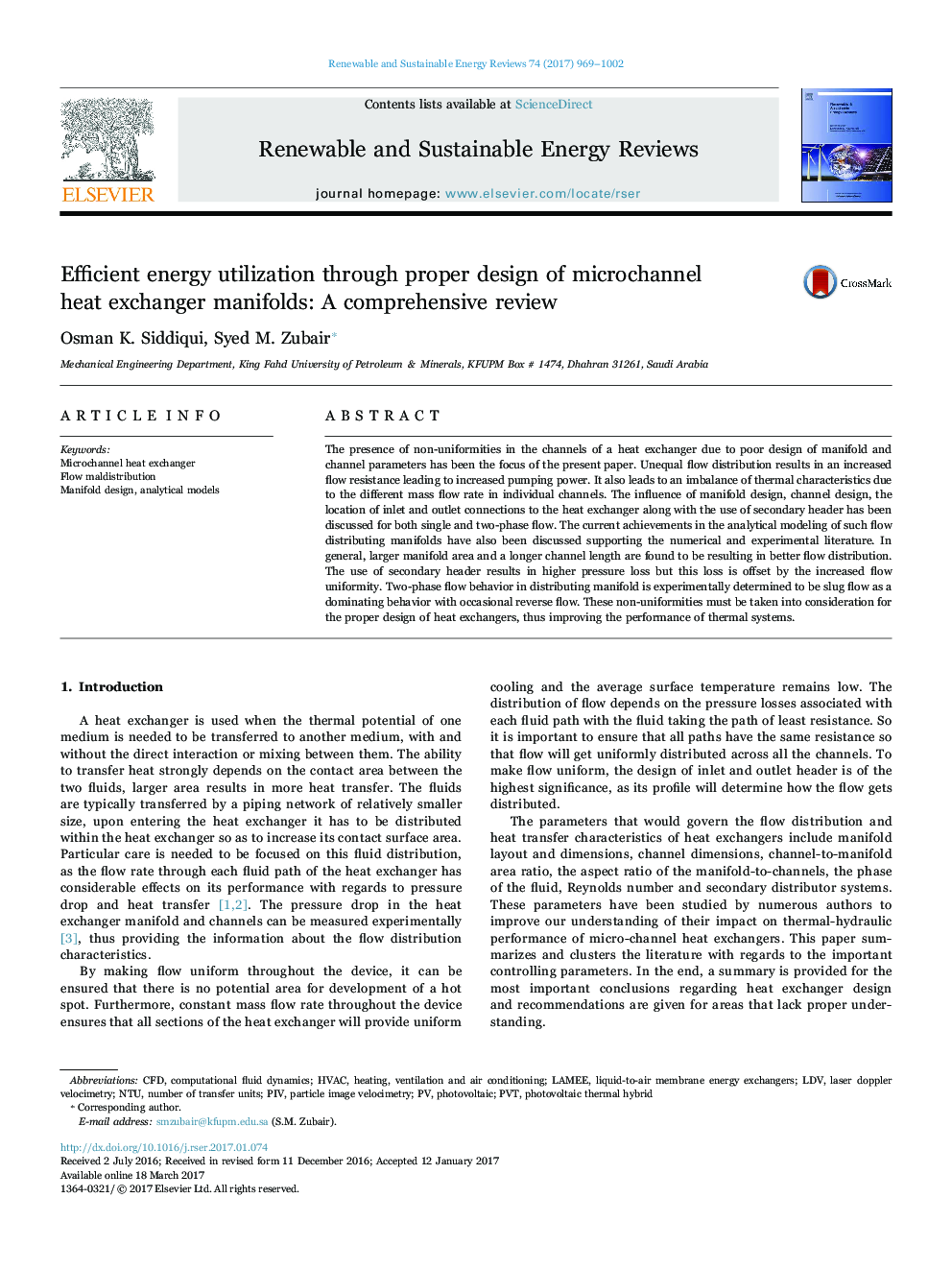| Article ID | Journal | Published Year | Pages | File Type |
|---|---|---|---|---|
| 5483171 | Renewable and Sustainable Energy Reviews | 2017 | 34 Pages |
Abstract
The presence of non-uniformities in the channels of a heat exchanger due to poor design of manifold and channel parameters has been the focus of the present paper. Unequal flow distribution results in an increased flow resistance leading to increased pumping power. It also leads to an imbalance of thermal characteristics due to the different mass flow rate in individual channels. The influence of manifold design, channel design, the location of inlet and outlet connections to the heat exchanger along with the use of secondary header has been discussed for both single and two-phase flow. The current achievements in the analytical modeling of such flow distributing manifolds have also been discussed supporting the numerical and experimental literature. In general, larger manifold area and a longer channel length are found to be resulting in better flow distribution. The use of secondary header results in higher pressure loss but this loss is offset by the increased flow uniformity. Two-phase flow behavior in distributing manifold is experimentally determined to be slug flow as a dominating behavior with occasional reverse flow. These non-uniformities must be taken into consideration for the proper design of heat exchangers, thus improving the performance of thermal systems.
Keywords
Related Topics
Physical Sciences and Engineering
Energy
Renewable Energy, Sustainability and the Environment
Authors
Osman K. Siddiqui, Syed M. Zubair,
